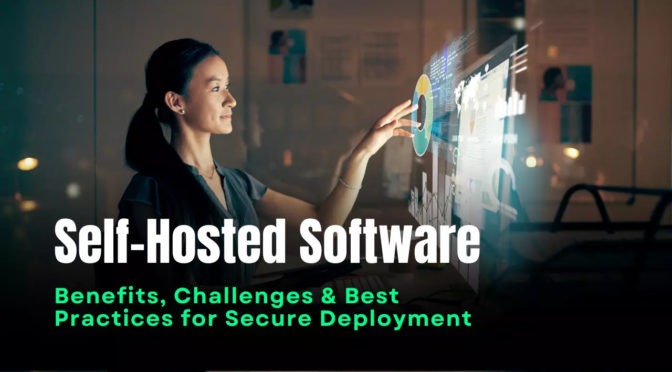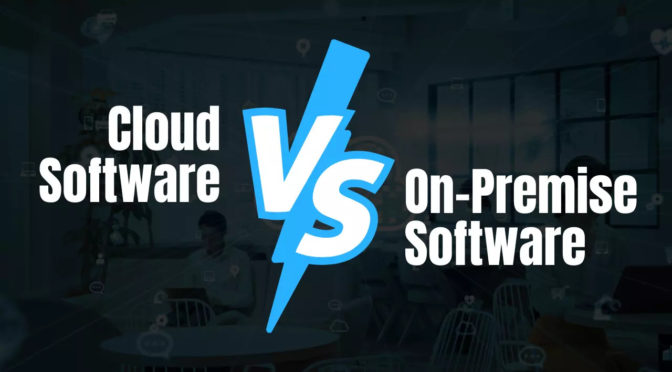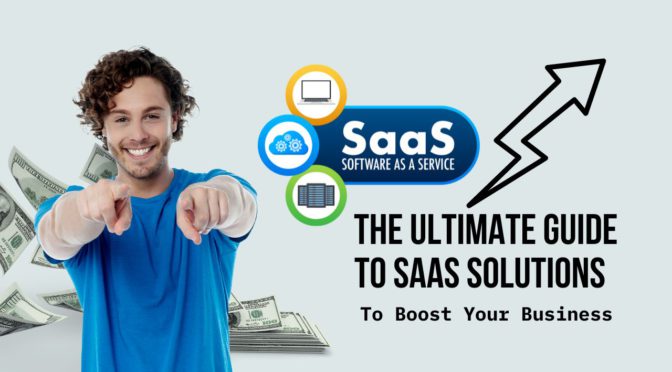Self-hosted business software provides your business with control, customization, and flexibility compared to having a third-party vendor take care of the deployment and hosting. However, you will have to ensure that the self-hosted software is protected from common cyber threats from hackers and malicious actors specifically targeting business software systems. This article explores will tell you everything you should know about self-hosted software for business and the best practices that you should follow to maintain a secure self-hosted software environment:
What is a Self-hosted Software
Self-hosted software refers to applications or programs that are installed and run on a user’s own infrastructure, such as your business servers or local computers, rather than relying on a cloud-based or third-party hosting service. In the context of self-hosted software, your business will have complete control over the installation, configuration, and management of the software and its associated data.
Unlike software-as-a-service (SaaS) solutions, where the software is hosted and managed by a service provider and accessed over the internet, self-hosted software allows organizations or individuals to maintain their own infrastructure and have full control over their data and security.
It is typically obtained as a downloadable package or installation file that can be installed on compatible hardware and operating systems. Once installed, you then have direct access to the software and can customize it to meet their specific requirements. You will also be responsible for managing updates, backups, security measures, and any necessary integrations or maintenance tasks associated with the software.
Benefits of Self-hosted Software
Here are some key benefits of using self-hosted business software:
Increased Control and Customization: One of the primary advantages of self-hosted software is the level of control and customization it provides. You will have complete control over the software environment, including installation, configuration, and customization according to their specific requirements. This level of control allows you to tailor the software to your specific workflows, business processes, and security needs.
Enhanced Data Privacy and Security: Self-hosted software also allows you to have full control over your business data. Remember, your software is hosted in your own servers or infrastructure thus you can ensure that sensitive data remains within their premises and under their direct supervision. This provides an added layer of data privacy and security, particularly for industries with strict compliance requirements or sensitive customer information.
Improved Performance and Scalability: Self-hosted software also allows your organization to optimize performance based on its specific infrastructure and hardware capabilities. You can allocate resources and fine-tune the system to maximize performance and ensure smooth operations. Additionally, self-hosted software offers greater scalability, allowing you to scale your infrastructure as needed to accommodate growing business requirements.
Cost-Effectiveness: In some cases, self-hosted software can be more cost-effective compared to cloud-based or subscription-based alternatives. While the initial investment in hardware and infrastructure may be higher, you are bound to benefit from lower long-term costs, especially for large-scale deployments or extended usage periods. Additionally, self-hosted software eliminates ongoing subscription fees, making it a cost-efficient choice for organizations with stable or predictable software needs.
Offline Access and Reliability: Self-hosted software offers the advantage of offline access, allowing users to continue working even when there is limited or no internet connectivity. This is particularly beneficial in remote locations or situations where internet access may be unreliable. In fact, you can be able to ensure that some critical business functions remain operational regardless of internet availability.
Compliance and Regulatory Requirements: Certain industries and organizations have strict compliance and regulatory requirements regarding data storage, privacy, and security. In such a case, self-hosted software allows you to maintain compliance more effectively by adhering to specific industry standards and regulations. You will be able to implement the necessary security measures, control data access, and manage compliance-related processes in a manner that aligns with specific industry requirements in your niche.
Long-Term Ownership and Access: With self-hosted software, you more or less have that ownership and control over the software and its associated data. This means that should the software provider discontinue support or services, you can continue using the software as long as it meets your needs. This long-term ownership ensures uninterrupted access to critical business systems and reduces dependence on third-party providers.
Challenges with Self-hosted Software
It’s important to note that self-hosted software requires technical expertise and resources to install, configure, and maintain. You must have the necessary infrastructure and personnel to support the software and ensure its proper functioning and security.
Talking of security challenges, let’s look at some of the best practices to secure self-hosted software in your business:
How To Secure Self-Hosted Business Software
Strong Authentication and Access Controls
Implementing strong authentication mechanisms and access controls is one of the simplest ways to secure your self-hosted software. You will need to enforce strong password policies, including complexity requirements, regular password changes, and avoiding common passwords.
You can even implement multi-factor authentication (MFA) to add an extra layer of security by requiring users to provide additional verification, such as a one-time password or biometric authentication.
Using Role-based access controls (RBAC) is another excellent way to ensure that users have appropriate access rights based on their roles and responsibilities within the organization.
Regular Software Updates and Patch Management
Regularly updating and patching self-hosted software is crucial for maintaining security. Most software providers frequently release updates and patches to address vulnerabilities and improve software security.
You have the onus to establish a proactive patch management process that includes monitoring for updates, testing patches in a non-production environment, and deploying them promptly to minimize vulnerabilities and reduce the risk of exploitation.
Secure Data Storage and Encryption
Protecting data at rest is also crucial for self-hosted software. In this regard, you should employ encryption measures to safeguard sensitive data stored on servers or databases. Encryption ensures that even if the data is accessed or stolen, it remains unreadable without the encryption key.
Additionally, data transmitted between clients and servers should be encrypted using secure communication protocols such as HTTPS or SSL/TLS. By implementing encryption at rest and in transit, you can reduce the risk of unauthorized access and protect the confidentiality of their data.
Robust Network & Infrastructure Security
Implementing robust network security measures is also essential to secure self-hosted software. According to Aspire Technology Partners, you need to secure wired and wireless networks in your business to protect your self-hosted software from attacks.
You should also use cybersecurity tools like firewalls to monitor and control network traffic, ensuring that only authorized connections are allowed. Intrusion detection systems (IDS) and intrusion prevention systems (IPS) can also be used to identify and respond to potential threats and attacks in real time.
As a rule of thumb, do regular monitoring of your network traffic, conduct vulnerability assessments, and perform penetration testing.
In fact, engaging third-party security experts to perform vulnerability assessments, penetration testing, and code reviews also helps identify potential security flaws that could be exploited by attackers.
These proactive cyber defense approaches can help identify and address potential security weaknesses, strengthening the overall network security posture.
Employee Training and Awareness
Educating employees about cybersecurity best practices is one of the best ways to secure your business software and infrastructure. Regular training sessions tend to raise awareness about common security threats, social engineering tactics, and safe software usage practices.
Make sure you educate your team about the importance of strong passwords, recognizing and avoiding phishing attempts, and reporting any suspicious activities promptly. Also, establish clear security policies and procedures. These steps will help create a collective responsibility for maintaining the security of self-hosted software.
Regular Data Backups and Disaster Recovery
Last but not least, always back up your critical data to protect against data loss in the event of a security incident or system failure. You need a robust data backup strategy that includes frequent backups and testing the restoration process to ensure data integrity and availability.
Additionally, implement a comprehensive disaster recovery plan to recover quickly and efficiently from significant disruptions. This way, you can minimize downtime and ensure the continuity of operations in the event of a disaster affecting your self-hosted business software.
Wrapping up
A self-hosted software deployment is an excellent option if your organization is looking to take full control and prioritize aspects like data privacy, security, and customization. Remember, though, that this kind of deployment requires technical expertise and resources to install, configure, and maintain the software. It is even vital to ensure you implement best practices to secure the self-hosted software if you are to ensure proper functioning and security.











